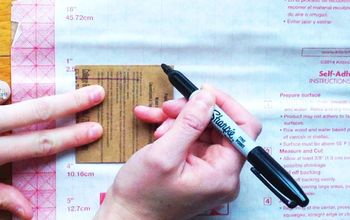When is the best time of the year to plant trees if you live in NC?

-
Fall is a good time for planting trees. Make sure you use peat moss when planting and keep watered until roots are established.
 Janet Pizaro
on Oct 20, 2016
Helpful Reply
Janet Pizaro
on Oct 20, 2016
Helpful Reply -
-
Thank you very much, I thought Fall would be best, especially here when it gets so hot in the summer.
 Wendy Minahan
on Oct 20, 2016
Helpful Reply
Wendy Minahan
on Oct 20, 2016
Helpful Reply -
-
Contact: Brenda Cleveland, agronomist NCDA&CS Agronomic Division (919) 733-2655 Tips for transplanting trees and shrubs RALEIGH — Most gardeners find their enthusiasm for gardening with the warming temperatures, longer days and daffodil blooms of late winter. They may not know that fall is also an excellent time to rejuvenate the home landscape, especially for planting new trees and shrubs. The cost of buying plants and the effort of digging holes and moving plants from pots to garden are good reasons for wanting to do the job well and be successful on the first try. One of the best ways to start a landscaping project is to collect soil samples from your flower beds. Soil testing is a free service of the N.C. Department of Agriculture and Consumer Services. Soil test reports provide very practical information about soil pH and nutrient levels as well as recommendations for lime and fertilizer, when needed. To find information on how to collect and submit soil samples, visit the NCDA&CS Agronomic Division Web site www.ncagr.com/agronomi or call (919) 733-2655. Other important factors that affect plant survival and growth after transplanting include site selection, time of planting, method of planting, soil amendments, water and mulch. Site selection. Evaluate your site and choose plants that are suited for it. Site-specific items to consider include the amount of shade versus sunlight, the moisture level of the soil, and how exposed or protected the site is. It is also important to choose plants that are hardy in this part of the country. Most of North Carolina is in U.S. Department of Agriculture Hardiness Zones 7a and 7b. When you purchase plants at nurseries and garden centers, look for labels that provide information about these environmental needs. Time of planting. Fall, late winter and early spring are the best times to transplant trees and shrubs. Roots are active during these periods, and weather is less demanding. Summer is generally the most stressful time to transplant trees and shrubs. Good root activity at the time of transplanting is critical because roots provide the food and water essential to successful establishment and growth. Method of planting. Loosen roots, but do not shake off all of the potting soil. If roots are potbound (that is, growing around in a tight circle), it may be necessary to clip them so they will grow out normally into the soil. Dig the hole two to three times wider than the plant container but not deeper. Position the plant so the crown—the point where the roots and above-ground portion meet—is right at or just above the soil line. Planting a little high is fine since some sinking typically occurs after transplanting. If any stems are damaged in the process, carefully prune them back. Soil amendments. Some sites need more than lime and fertilizer to be suitable for planting. Many times during new home development, the topsoil is removed leaving heavy, subsurface clay. The physical properties of a heavy-textured clay or even a light-textured sand are improved by the addition of a soil conditioner, such as well-composted organic matter. Soil amendments are best mixed into soil when an entire bed is being prepared for planting as opposed to an individual hole. Water. Provide adequate water—but not too much—during the establishment phase. A good way to decide whether to add water is to check the moisture of the soil about two to three inches below the surface. If the soil is dry at that depth, water thoroughly in early morning or late afternoon. Once woody plants are well-established, water only during long periods without rain. Mulch. Finally, after planting and watering, add some mulch. Mulching helps conserve moisture and reduces extreme temperature fluctuations. Three to four inches of mulch is adequate. Don’t get carried away! Too much mulch can weaken the plants in the long run. Also, be sure to keep mulch a couple of inches away from the crown of each plant. Once trees and shrubs are successfully transplanted according to these guidelines, follow up every two to three years with a soil test. Periodic soil testing is the best way to keep soil fertility and pH within the desired ranges. For advice on collecting soil samples or interpreting your report, contact your local NCDA&CS regional agronomist. Contact information is available online at www.ncagr.com/agronomi/rahome.htm. -cs-2,3,4 Last Update August 1, 2007 Browse Division About the Division Find Your Report (PALS) Field Services Nematode Assay Plant Tissue Analysis Soil Testing Soilless Media Analysis Solution Analysis Waste/Compost Analysis Agrotips News Releases Publications Staff Virtual Tour Instructional PowerPoints Related Sites Agronomic Site Map NCDA&CS Agronomic Services Division, Colleen M. Hudak-Wise, Ph.D., Director Mailing Address: 1040 Mail Service Center, Raleigh NC 27699-1040 Physical Address: 4300 Reedy Creek Road, Raleigh NC 27607-6465 Phone: (919) 733-2655; FAX: (919) 733-2837
 Michael
on Oct 20, 2016
Helpful Reply
Michael
on Oct 20, 2016
Helpful Reply -
-
www.arborday.com All you want to know about trees. Members get discounts. Free trees every year. Great organization.
 Ljgordon
on Oct 20, 2016
Helpful Reply
Ljgordon
on Oct 20, 2016
Helpful Reply -
-
Yes, right now is best! Look at GOOD local nurseries. They may say add root simulator, but if you water every few days and or get rain, your plants should be fine. Always plant trees & bushes in the fall!!
 Colleen Anne Morlock Mitchell
on Oct 20, 2016
Helpful Reply
Colleen Anne Morlock Mitchell
on Oct 20, 2016
Helpful Reply -
-
Wow, Michael you have been super helpful. Thank you so much. Wendy
 Wendy Minahan
on Oct 21, 2016
Helpful Reply
Wendy Minahan
on Oct 21, 2016
Helpful Reply -
-
Thank you so much Colleen, I appreciate your help. I thought it was the best time of the year to plant but I wasn't positive. Thank you so much for your help. Wendy
 Wendy Minahan
on Oct 21, 2016
Helpful Reply
Wendy Minahan
on Oct 21, 2016
Helpful Reply -
Related Discussions
GNATS - How to get rid of them?
Somehow my house and garden got tiny gnats that killed my fuchsia plant and fly everywhere. I have tried ALL the Web recommendations - soap and oil dishes, sand in th... See more
Marigolds growing! Should I pinch the buds?
My marigold plants are growing. I heard that pinching the buds until Autumn will allow them to grow without killing the plant. Is this true?
Growing garlic
Growing our first garlic, should we wait until the leaves are drying out before we pick it? Husband picked first one today along with our first potatoes.
How to keep mice out of your garden?
Hi everyone, I have mice in my garden destroying my vegetables and I have also noticed them in the barn and shed. Please can someone tell me how to prevent them from ... See more
What's the best flower/plant to grow in Texas?
I know that opinions vary, but what's your opinion?!I have great luck w Rosemary plants. Green all year long.
When is the best time to plant magnolia trees?
I want to plant a row of magnolia trees at the top of a hill in my back yard. Can I plant now, and is there a variety that doesn't grow very tall? Any other things to... See more
When is the best time to plant trees in central North Carolina
I live in Linden North Carolina, about 20 miles north of Fort Bragg. I would like to plant some trees - specifically shade trees and a peach tree. When is the best ti... See more


